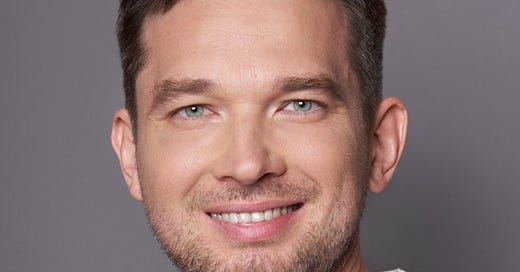I love visiting Warsaw—I meet someone interesting nearly every time I come. This November, I experienced my first snowfall of 2024 here, which was exciting.
I also had the chance to meet Borys, who leads SMOK VC. If you’re a CEE founder (or aspiring founder), don’t hesitate to pitch him!
What I like about talking to VCs outside of pitching is that they see the world differently from PMs or founders. They have their own unique lens, and personally, I learn a lot from them.
Here are my takeaways from this conversation for you.
To build something successful, you need to know what success looks like
Founders (and likely PMs) from less developed economies rarely have examples of people they know making it big. They need to be shown and inspired.
The best way to see how growth looks like is to join a startup that is actively growing. This is how you can learn growth by doing growth.
High-growth startup employees make great founder material and are always a green flag for VCs.
Former FAANG employees are not always great founder material. However, they can be if they have unique customer or technical insights that are not widely available. Example - ElevenLabs, a Polish unicorn co-founded by former FAANG employees.
The best way to become a founder is to learn from great founders
Don’t just join a startup that pays well and solves a problem that excites you. Make sure you are as close to the founding team as possible.
The best time to join a growing company is while it still has fewer than 50 employees. That’s how you can learn from every function.
On the importance of personal branding
Think of narratives you want to be associated with.
Publicity can give you access to people you didn’t even know existed.
Founder-led growth exists but is very hard to crack. This doesn’t work for most companies, especially in B2C.
Pattern-matching
Whenever you meet with a VC, they evaluate you to answer one key question: Do you look, speak, and behave like someone who could one day become the founder of a billion-dollar company? Made me think that I really need to start figuring out how to look like one.
Idea or traction?
At the Seed stage, if you’re building something that anyone could build, your traction is crucial.
However, if you have unique insights and a deep understanding of the problem that isn’t obvious, traction becomes much less important. You just need to come across as someone who can build a huge company based on that understanding.
Other topics we covered
What does SMOK VC do?
Why focus on CEE diaspora founders?
What’s the difference between CEE founders and U.S. founders?
Why doesn’t FAANG always produce good startup material?
How much of SMOK’s deal flow comes from LinkedIn?
What’s the most ridiculous pitch Borys has heard?
Why is pattern matching important in VC?
How can someone get into VC?
Does founder-led growth actually exist?
What was the biggest opportunity Borys missed?
What is SMOK VC’s request for startups?
What advice does Borys have for all early-stage founders?













Share this post